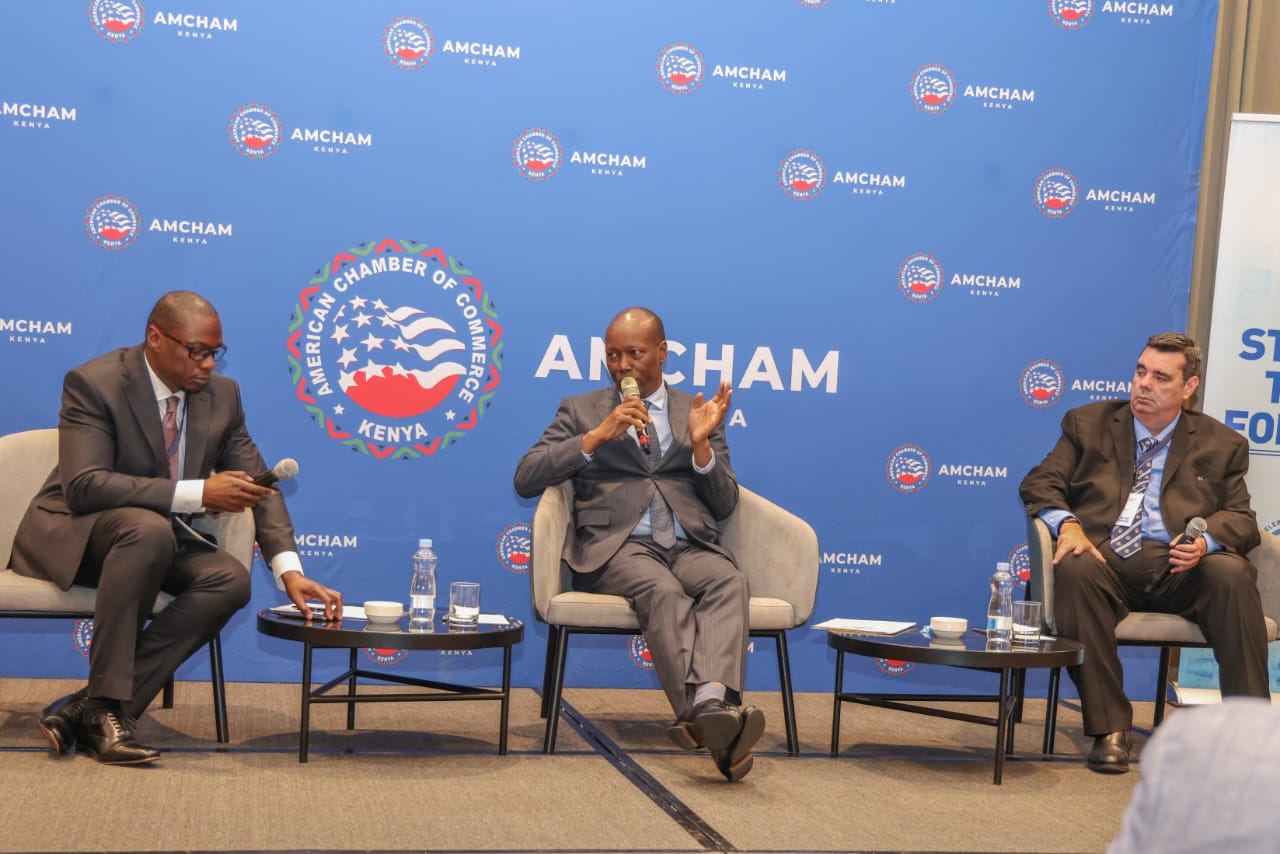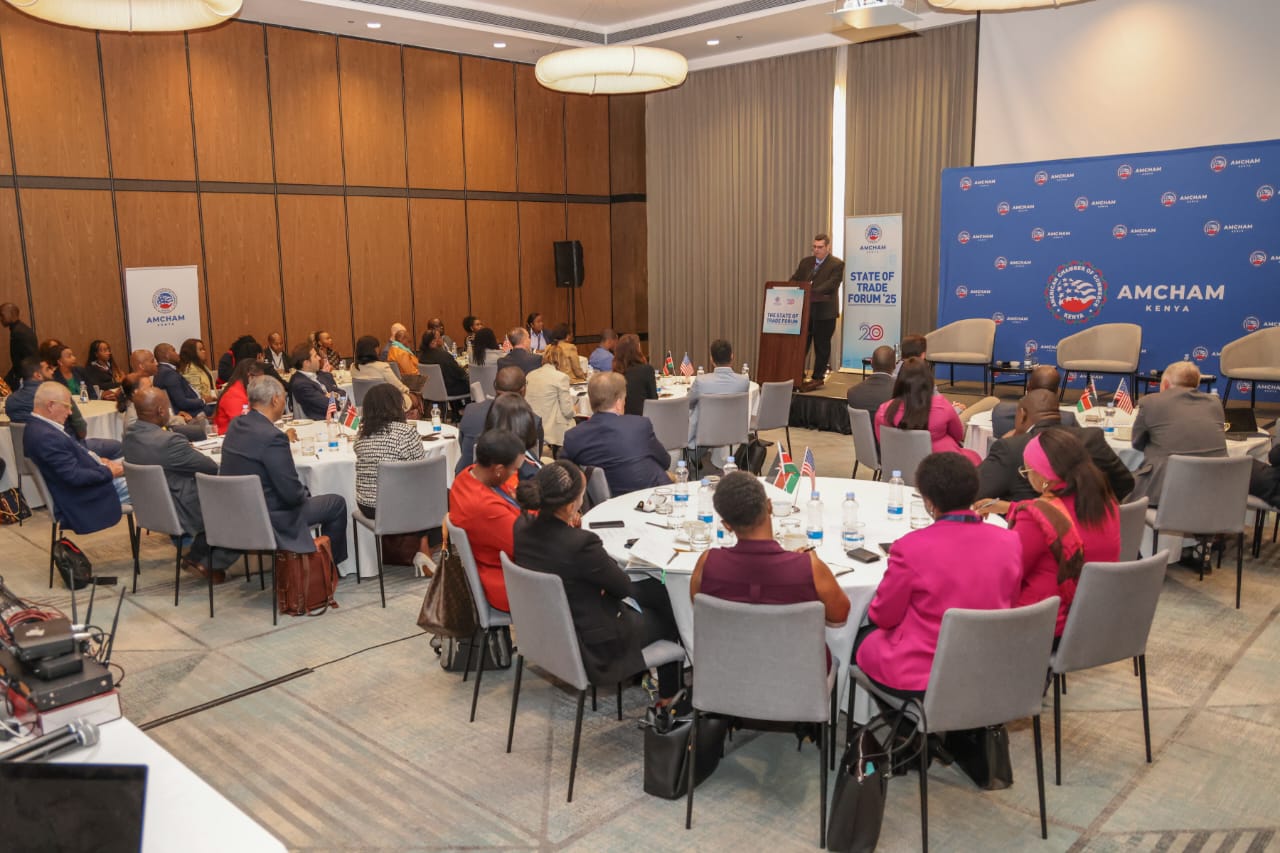
 Trade CS Lee Kinyanjui during panel discussion at the AMCHAM State of Trade in Kenya Forum held on Thursday, November 13, 2025. /LEE KINYANJUI/X
Trade CS Lee Kinyanjui during panel discussion at the AMCHAM State of Trade in Kenya Forum held on Thursday, November 13, 2025. /LEE KINYANJUI/XKenya is stepping up efforts to secure a stronger foothold in the US market following the expiry of the African Growth and Opportunity Act, the preferential trade regime that for two decades granted duty-free access to eligible sub-Saharan African exports.
AGOA expired on September 30, 2025, and has not been renewed since its last 10-year extension in 2015, though discussions with the US government are reportedly ongoing.
Kenya has meanwhile sought to recalibrate its trade strategies with the US amid ongoing lobbying for an extension of the programme.
Speaking on Thursday during the American Chamber of Commerce (AmCham) State of Trade Forum breakfast dialogue, Trade Cabinet Secretary Lee Kinyanjui said Kenya was adopting what he described as “bold and proactive engagement” as the country pivots beyond the AGOA era.
He said Kenya is “optimistic of a positive announcement from Washington before the end of the year, but in the meantime, stepping forward to shape a modern trade future with long-term industrial and regional impact.”
 Attendees at the AMCHAM State of Trade in Kenya Forum held on Thursday, November 13, 2025. /LEE KINYANJUI/X
Attendees at the AMCHAM State of Trade in Kenya Forum held on Thursday, November 13, 2025. /LEE KINYANJUI/XKinyanjui described the post-AGOA moment as a chance for Kenya to reimagine its export and investment ambitions.
He outlined the next phase of Kenya’s strategy, which includes deepening Special Economic Zones, attracting investment in electric vehicles, pharmaceuticals and other high-value sectors, and strengthening regional value chains.
The CS added that lessons from the pandemic underscore the importance of resilience, noting that Kenya intends to use lessons from the pandemic to diversify supply chains.
Kinyanjui also pointed to domestic reforms that could enhance competitiveness, saying that lifting the moratorium on power purchase agreements “signals a policy shift that may end power outages and reduce energy costs, a move set to benefit Kenya’s manufacturing base.”
“Kenya remains the gateway to East Africa and the rest of the continent,” he said, framing the moment as a chance to build smarter, resilient trade systems.
 Trade CS Lee Kinyanjui (C) at the AMCHAM State of Trade in Kenya Forum held on Thursday, November 13, 2025. /LEE KINYANJUI/X
Trade CS Lee Kinyanjui (C) at the AMCHAM State of Trade in Kenya Forum held on Thursday, November 13, 2025. /LEE KINYANJUI/XAmCham Kenya Board President Angela Ng’ang’a reinforced the view that the end of AGOA should be seen not as a loss but a strategic opening.
She said global trade is increasingly driven by digital and investment-led systems, arguing that Kenya and the US can now shape “a reciprocal, investment-driven platform that reflects the realities of a digital, diversified global economy.”
She urged deeper US investment in textile and agricultural value chains and affirmed the private sector’s commitment to regional trade development.
US–Africa trade specialist Gavin van der Burg said AGOA was never meant to be permanent, and its expiry should trigger innovation.
He highlighted the Kenya–US cotton and apparel supply chain model — in which US cotton is imported, processed locally into garments, and exported back to the US — as a blueprint that can be scaled through contract farming, yarn-to-fabric infrastructure and logistics upgrades.
Fresh 2024 data underlines the strength of the commercial relationship. US exports to Kenya rose to $771 million (Sh99.459 billion), a 60 per cent increase from the previous year.
Kenyan exports to the US stood at $737 million (Sh95.073 billion), driven by $470 million (Sh60.63 billion) in apparel alongside coffee and cut flowers.
The trade balance recorded a $34 million (Sh4.386 billion) US surplus, pointing to what Kinyanjui called a healthy, mutually beneficial exchange.
Forum participants agreed that despite AGOA’s expiry, institutional engagement and commercial momentum remain robust.
Both countries are expected to accelerate talks on a successor framework that supports industrial growth, reciprocal trade and African innovation.
For Kenya, Kinyanjui said, the next phase is about seizing momentum.
“We must seize the opportunity to build smarter, more resilient frameworks,” he said.
As the duty-free era comes to an end, Kenya is banking on policy clarity, investment attraction and upgraded value chains to consolidate — and expand — its share of the lucrative US market.















